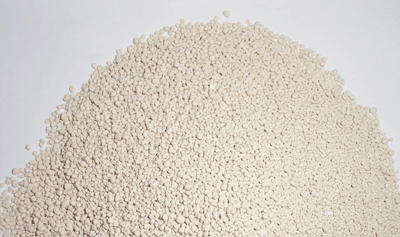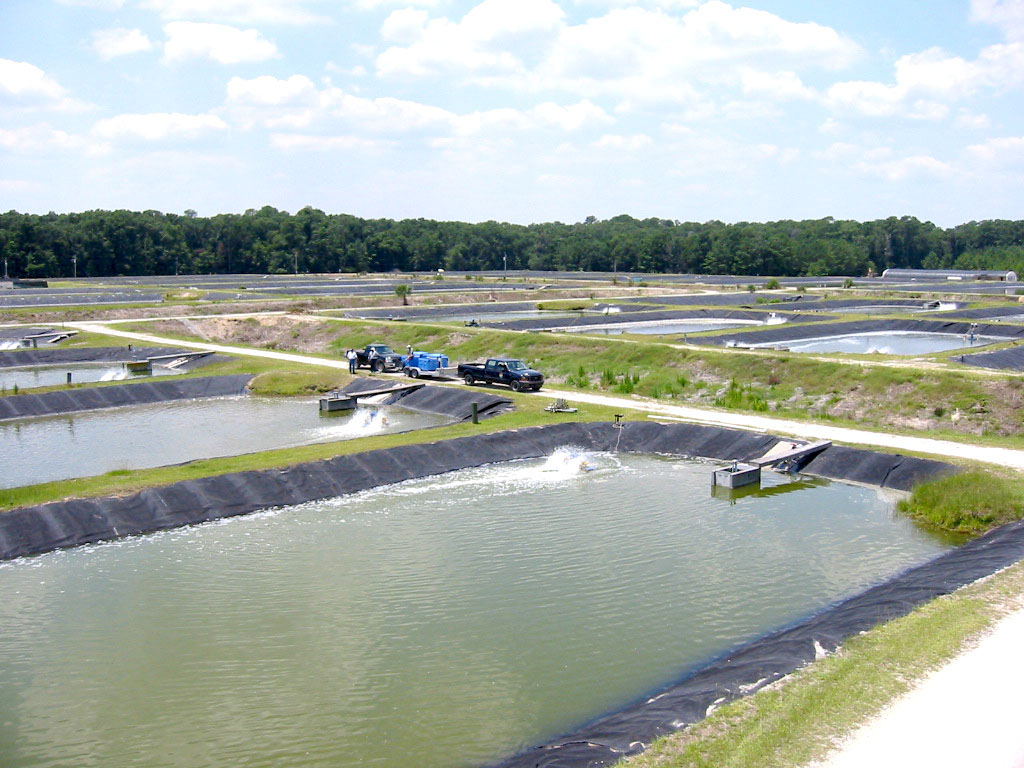
Calcium Peroxide Granlues
Tranditionally, calcium peroxide is a white or yellowish solid peroxide
which slowly decomposes to release oxygen at a "controlled"
rate when in contact of hydrous media.  Calcium
peroxide based chemical oxygen product is of the most temperature stable
inorganic oxygen release compounds. It is practically insoluble in water,
and dissolves in acids, forming hydrogen peroxide and calcium hydroxide.
Calcium
peroxide based chemical oxygen product is of the most temperature stable
inorganic oxygen release compounds. It is practically insoluble in water,
and dissolves in acids, forming hydrogen peroxide and calcium hydroxide.
In addition to tranditional fine powder form of calcium peroxide, we also developed granules form of calcium peroxide for your final application. The advantages this unique form of calcium peroxide:
Comparing with fine powder form material which is difficult to handle and floats in water. it make difficult or impossible to handle when it is desired to treat large water bodies or the sediment or bottom. etc of a water body when water is present wihtout special effort and care, such as by draining the water. Our unique solid form calcium peroxide (granule, briquette, tablet, prill, flake, pellet, etc) is not a powder, and is engineered to have a higher bulk density such that it easily settles to the bottom of the water body to be treated and thus comes into contact with any residue, sediments etc. located at the bottom of such water body. this granlues are easily mixed with soils or sediments for ex situ treatment. In addition, granules form exhibit an oxygen release profilee that is slower then the powder, leading to prolonged activity after a single application. thus reducing the frequency of re-application.
 This
unique granule form sinks in water preferably, it has a much lower surface
area than fine powder fom, this contributes to a reduction in dissolution
rate of the active ingredients embedded in the solid form, easy to be
dispensed or spreaded over wide areas of water body. it does not disintegrate
quickly or easily due to higher degree of compaction.
This
unique granule form sinks in water preferably, it has a much lower surface
area than fine powder fom, this contributes to a reduction in dissolution
rate of the active ingredients embedded in the solid form, easy to be
dispensed or spreaded over wide areas of water body. it does not disintegrate
quickly or easily due to higher degree of compaction.
Slow release of corresponding metals ion in water e.g.Ca from calcium peroxide (reaction with anions such as nitrate,carbonate, carbon dixoide, sulfate, phosphate etc. leading to insoluable salts whic reducues acidity, leads to phosphate immobilization. reduces photosynthesis due to reduction in CO2, and can lead to reduced water conductivity; Providing a source of calcium that is adsorbed by living organisms to sustain life).
Some preferred uses and benefits include:
Learn more about calcium peroxide
- Granlues form of calcium peroxide and its advantages for different applications
- Calcium Peroxide used as dough conditioner for baker industry
- Application of Calcium Peroxide to Gold Cyanide Leaching - Gold Mining Industry
- In Situ Bioremediation Overview
- Oxidants Enhance Water Quality in fish/shrimp farming
Download
![]() Specification
Data Sheet (Fine Powder Form 75% grade)
Specification
Data Sheet (Fine Powder Form 75% grade)
Specification
Data Sheet (Fine Powder Form 60% grade)
Specification
Data Sheet (Granlues / Sinking Solid Form)
Material Safety Data Sheet
